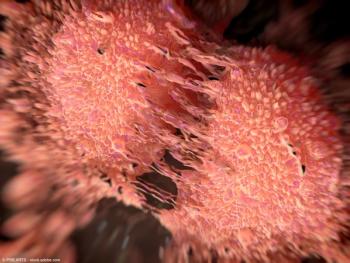
Immune cell discovery offers new potential for cancer immunotherapy

Key Takeaways
- Stem-like CD4 T cells, identified in lymph nodes near tumors, are pivotal for anti-tumor immunity but often remain inactive.
- Activation of these cells enhances PD1 blockade immunotherapy, improving treatment outcomes in some patients.
Winship study paves the way for more patients to benefit from future immunotherapies.
Researchers at Winship Cancer Institute of Emory University have identified a novel type of immune cell, called the stem-like CD4 T cell, that plays a pivotal role in anti-tumor immunity. The pre-clinical findings,
Led by
The stem-like CD4 T cells have the ability to renew themselves and transform into different immune cell types. These cells are marked by two specific proteins, PD1 and TCF1, which help determine their behavior, including self-renewal and regulation. In lab models, activating these cells made a common immunotherapy treatment called PD1 blockade more effective against cancer.
“In around 10% of patients where the stem-like CD4 cell is active, there is a far more vigorous immune response to the cancer,” says Kissick. “These patients survive longer after surgery and are much more likely to respond to checkpoint immunotherapy. However, the challenge we identified is that in most patients, this cell remains in a suppressive state, which essentially tells the immune system to remain idle and ignore the tumor.”
First author Maria Cardenas emphasizes the significance of overcoming this suppression: “Most importantly, while finding the immune system of patients with cancer in this idle state is common, we discovered that the stem-like CD4 T cell is capable of switching to an active state. It can restart a powerful anti-tumor immune response and enhance responsiveness to PD1 blockade in animal models.”
The findings suggest that almost all patients have this stem-like CD4 T cell in the lymph nodes surrounding their tumors. “Understanding how to teach these cells to switch between the active and idle states could identify new ways to treat many more patients with immunotherapy,” Kissick explains.
Future exploration of this discovery is needed to determine how to turn the cells’ immune response on and keep it on. Researchers aim to use mRNA and lipid nanoparticle (LNP) technology to re-program these stem-like CD4 T cells, effectively removing the brakes on the immune response to cancer.
“We still have many questions to answer and challenges to overcome,” says Kissick. “I feel confident that Winship of Emory is the place for these discoveries and advancements to be made and to determine how to leverage these mechanisms to target the cells and direct them to do what we need them to do to turn on the immune response. We have all the pieces of the puzzle here, it’s just a matter of putting them together. Our Phase I Clinical Trials Unit is robust, and we have the contributions of physicians and patients here too.”
A team of researchers from Winship Cancer Institute co-led and contributed to this research, including
This study was supported by grants from the National Institutes of Health, The Prostate Cancer Foundation, Cancer Research Institute and James M. Cox Foundation.
Newsletter
Stay current with the latest urology news and practice-changing insights — sign up now for the essential updates every urologist needs.


















